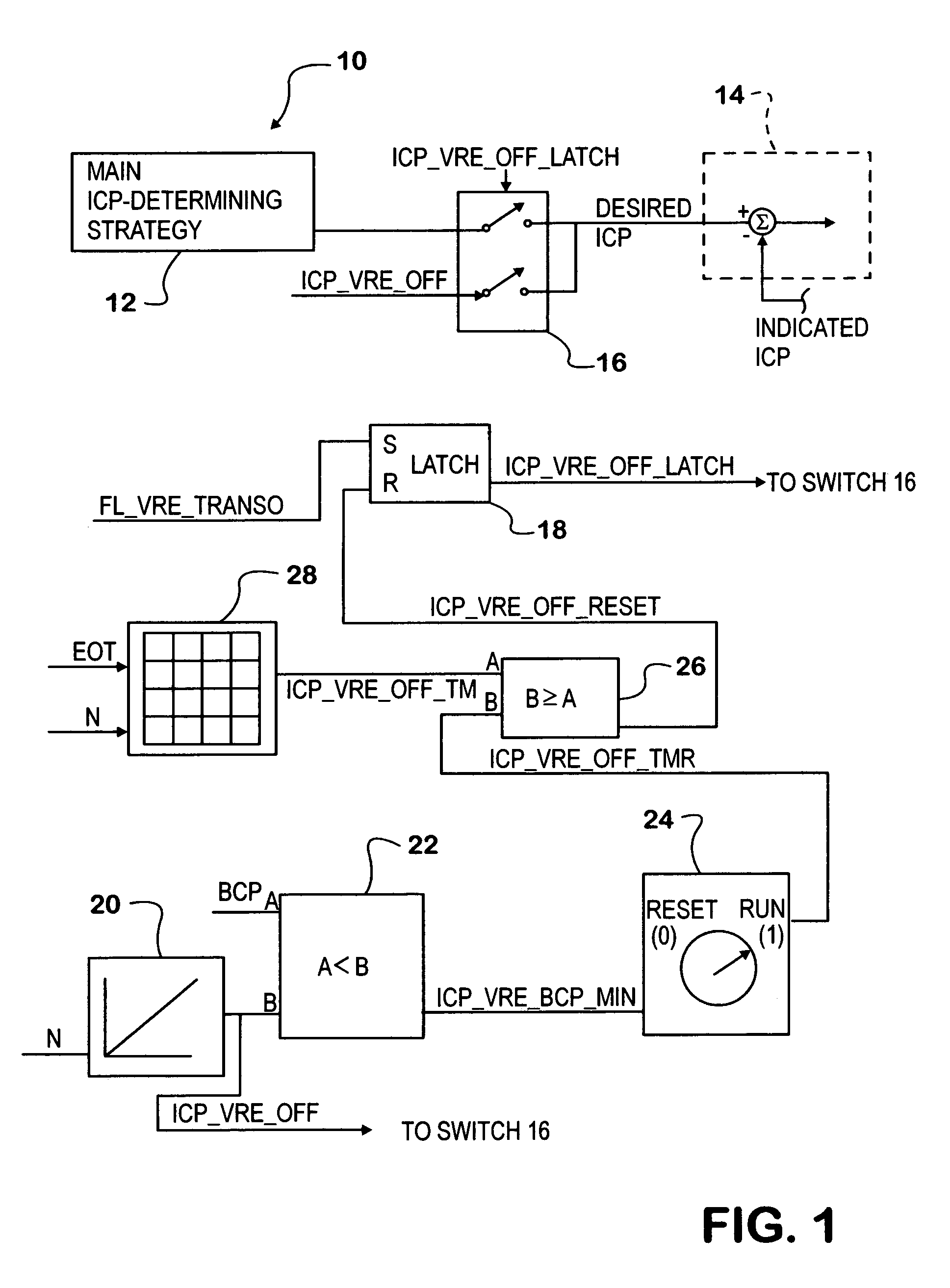Strategy for engine fueling during return to positive power flow after engine brake de-activation
a technology of positive power flow and engine, applied in the direction of machines/engines, output power, electric control, etc., can solve the problems of excess smoke, the rate at which the engine brake is released, and the transition may not be smooth as desired, so as to reduce the potential for misfire and the resulting generation of smoke in the exhaust.
- Summary
- Abstract
- Description
- Claims
- Application Information
AI Technical Summary
Benefits of technology
Problems solved by technology
Method used
Image
Examples
Embodiment Construction
[0020]FIG. 1 shows a portion of a fuel control strategy embodied in an exemplary internal combustion engine control system 10. The particular engine is a diesel engine that has a fuel injection system controlled by the fuel control strategy and an engine brake that is activated by pressure of a hydraulic control fluid. Activation and de-activation of the engine brake are controlled by requests from a portion of control system 10 not specifically shown in FIG. 1. When the brake is being applied (activated), the control system causes hydraulic control fluid under pressure to be delivered to a hydraulic actuator. When the brake is to be released (de-activated), the control system causes the hydraulic control fluid to be dumped from the actuator, relieving the pressure in the actuator and allowing the brake to de-activate.
[0021]The engine comprises cylinders forming combustion chambers in which fuel injected by fuel injectors ignites in hot air that has entered through an intake system ...
PUM
 Login to View More
Login to View More Abstract
Description
Claims
Application Information
 Login to View More
Login to View More - R&D
- Intellectual Property
- Life Sciences
- Materials
- Tech Scout
- Unparalleled Data Quality
- Higher Quality Content
- 60% Fewer Hallucinations
Browse by: Latest US Patents, China's latest patents, Technical Efficacy Thesaurus, Application Domain, Technology Topic, Popular Technical Reports.
© 2025 PatSnap. All rights reserved.Legal|Privacy policy|Modern Slavery Act Transparency Statement|Sitemap|About US| Contact US: help@patsnap.com


